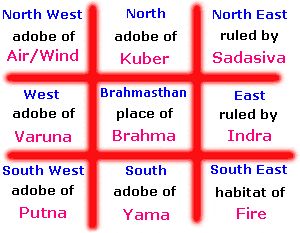Introduction Vastu for Land Selection :
The significance of land selection in Vastu Shastra, the ancient Indian science of architecture, cannot be overstated. According to Vastu principles, the right choice of land is essential for harmonious living and prosperity. In this blog, we will explore the key insights into selecting the right plot of land based on Vastu principles.
The Importance of Land Orientation and Shape in Vastu for Land Selection:
When it comes to Vastu principles for land selection, the orientation and shape of the land hold significant importance. Here are key considerations:
1. Emphasis on Directional Alignment:
Vastu places a strong emphasis on the cardinal directions. The ideal land shape is square or rectangular, with the utmost significance given to the northeast corner. It’s considered highly auspicious when the main entrance faces the northeast or east.
2. Avoidance of Irregular Shapes :
Irregularly shaped or non-standard plots, including those with unusual cuts or extensions, are generally discouraged. Such irregularities can disrupt the flow of positive energy and may lead to the accumulation of negative energy.
3. Ideal Plot Shapes:
According to Vastu principles, square and rectangular plots are regarded as the most suitable for residential use. In the case of rectangular plots, the recommended length-to-breadth ratio is 1:2 or less. It’s advisable to steer clear of plots with irregular shapes, especially circular, oval, and hexagonal configurations.
The terrain and topography of the land are also vital factors in Vastu land selection:
Elevation: A plot that is slightly elevated in the south or west is considered favorable. However, it’s important to avoid plots with sharp elevations, cliffs, or depressions, as they can create imbalances in energy.
1. Soil Quality :
The quality of the soil on the land should be examined. Fertile and well-drained soil is preferable for healthy vegetation and positive energy.
2. Proximity to Water Bodies:
Vastu principles acknowledge the significance of water bodies in land selection:
3. Natural Water Sources:
A plot of land near a clean and flowing water source, like a river or a lake, is highly auspicious. Water is associated with prosperity and positivity in Vastu.
4. Avoid Stagnant Water:
On the contrary, plots near stagnant or polluted water bodies should be avoided, as they can bring negative energy and health issues.
The surroundings of the land can influence its Vastu suitability:
1. Avoid Proximity to Cemeteries:
Plots near cemeteries or cremation grounds are generally discouraged in Vastu. Such locations are believed to carry negative vibrations.
2. Consider Natural Features:
The presence of natural features like lush greenery and hills in the vicinity of the land can enhance its positive energy.
The roads and streets leading to the land are significant in Vastu:
1. Road Direction:
The land should ideally be situated at the intersection of roads that run from east to west or north to south. Roads on the north and east sides are considered auspicious.
2. Avoid T-Junctions:
Land near T-junctions or dead-end streets should be avoided, as they can lead to energy imbalances.
The slope and direction of the land should be considered according to vastu:
1. Slope of the land:
The slope of the land should be towards the north or east direction. Avoid plots that slope towards the south or west direction
2. North and East Open Space:
Having open space or gardens in the north and east sides of the plot can invite positive energy.
3. Entrance:
The entrance to the plot should be in the north or east direction .
4. Boundaries:
The boundaries of the plot should be well-defined and clear. Avoid plots with unclear boundaries .
Conclusion :
Selecting the right plot of land based on Vastu principles involves a deep understanding of its orientation, shape, terrain, and surroundings. By paying attention to these key Vastu insights, individuals can make informed decisions and create a harmonious living environment that promotes well-being and prosperity. Remember that Vastu guidelines are intended to enhance the energy and ambiance of a place, and while they can be beneficial, individual needs and preferences should also be considered when choosing a plot of land.




